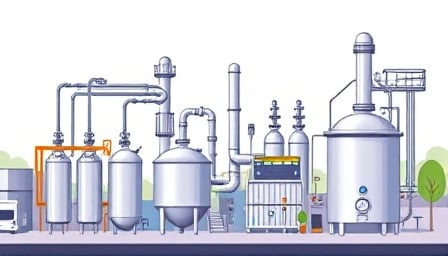Corporate News – Novozymes B
Market Reception and Analyst Outlook
The recent performance of Novozymes B’s shares has reflected a broader ambivalence toward the industrial enzymes sector, as well as a nuanced view of the company’s strategic positioning. Deutsche Bank’s latest coverage is illustrative of this trend. The bank’s analyst, after revisiting the company’s valuation framework, cut the target price to 480 Danish kroner from the previous estimate. Notably, the recommendation was left unchanged at “buy.” This adjustment is best understood as a cautious calibration rather than a wholesale reassessment of the firm’s long‑term value proposition. The analyst cited a “potential long‑term downturn” in the chemical industry—an industry that remains a core customer base for Novozymes B’s enzyme solutions—and the uncertainty it introduces into demand projections.
Despite this bearish adjustment, the “buy” stance underscores a belief that Novozymes B’s competitive moat—rooted in its strong patent portfolio, research‑driven product pipeline, and global manufacturing footprint—still offers upside in an industry that is undergoing a shift toward more sustainable processes. The analyst’s stance also reflects the broader risk environment, wherein investors have increased exposure to short positions in Danish equities, thereby adding a speculative dimension to the company’s valuation.
Sector‑Specific Dynamics: Chemical and Pharmaceutical Intersections
Novozymes B operates at the nexus of chemical manufacturing and biotechnology. In the chemical industry, the adoption of “green chemistry” principles is driving demand for high‑efficiency, low‑energy enzymes that reduce the need for harsh reagents. Conversely, the pharmaceutical sector’s focus on biologics has amplified the importance of precisely engineered microbial strains capable of producing complex therapeutic molecules.
A recent survey of medical professionals highlighted a preference for clinically tested strains over high‑dose probiotics, with 82% of respondents favoring the former. While Novozymes B is primarily known for its industrial enzyme portfolio, it also supplies microbial strains for food and feed, as well as for emerging biopharmaceutical applications. This survey suggests that, within the medical community, there is a discernible shift toward rigorously validated products. If the trend translates into commercial demand, companies like Novozymes B that maintain stringent quality standards and robust clinical data could gain a competitive edge. However, the immediate impact on the firm’s product mix remains uncertain, as the company’s core revenue streams are still dominated by industrial customers.
Competitive Positioning and Fundamental Drivers
Novozymes B’s competitive positioning can be analyzed through several lenses:
- Intellectual Property and Innovation – The firm’s research and development expenditures, concentrated on enzyme optimization and strain engineering, support a robust pipeline that is difficult for competitors to replicate quickly.
- Scale and Supply Chain – With manufacturing facilities spanning Europe, North America, and Asia, Novozymes B benefits from geographic diversification and reduced logistics costs.
- Customer Concentration – The company’s industrial customers—including large chemical and pulp & paper producers—provide stable revenue streams but also expose it to cyclical downturns in those industries.
- Sustainability Credentials – Novozymes B’s marketing of enzymes as a greener alternative aligns with the global shift toward carbon‑neutral production, reinforcing its value proposition.
These fundamentals are resilient, yet they operate within a macro environment characterized by volatile commodity prices, fluctuating demand for base chemicals, and evolving regulatory frameworks for bioprocesses.
Macro‑Economic Context and Cross‑Sector Linkages
The broader market sentiment toward Danish stocks, partly driven by a speculative short‑selling wave, has amplified volatility for Novozymes B. This sentiment is not isolated to the Danish market; it reflects a global reassessment of growth prospects in mature industries such as chemicals and metals, where demand is tightening amid the transition to low‑carbon economies.
The intersection between the chemical and biotech sectors also illustrates a classic “crossover” scenario: improvements in one domain can feed into the other. For instance, advances in enzyme technology that reduce energy consumption in chemical manufacturing may lower operational costs for pharmaceutical firms, thereby indirectly supporting demand for Novozymes B’s products. Conversely, stricter regulations on chemical production may necessitate more robust bioprocesses, creating new opportunities for enzyme suppliers.
Outlook
Overall, the financial narrative surrounding Novozymes B is one of caution tempered by recognition of the company’s strategic assets. The Deutsche Bank target‑price revision and the survey insights underscore uncertainties in both the chemical and medical domains. Yet, the firm’s emphasis on innovation, scale, and sustainability positions it to navigate the evolving landscape. Investors will likely monitor:
- The pace at which chemical producers adopt enzyme‑based processes.
- The translation of clinical preference for tested strains into commercial volume.
- Macro‑economic signals indicating a rebound in industrial activity.
Until these factors crystallize, the consensus remains that Novozymes B offers a “buy” recommendation at a revised price target, reflecting a balance between risk mitigation and confidence in the company’s foundational strengths.
